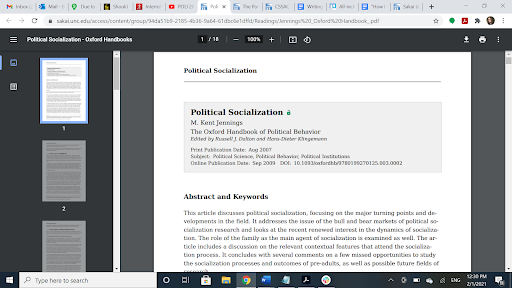Productivity Sprints: Working With a Short Attention Span
By Megan, a Writing Coach
For me, one of the most challenging parts of online learning is my attention span. It seems like the longer I spend on my laptop with fifteen tabs open, jumping between them and glancing at emails while on yet another Zoom call, the less I can actually concentrate on any one thing. These days, I struggle to concentrate on a task for more than twenty minutes at a time. I jump between projects at odd intervals, working on eight things at once and yet somehow not getting any of them done. It’s the worst!
To handle that issue, I first tried to minimize my distractions, which didn’t work quite as well as I’d hoped. Even though I had decreased the influence of distractions, I wasn’t able to lengthen my attention span. I could lock my phone in the kitchen cabinet downstairs and log out of my email, but if I wasn’t jumping between Twitter and my readings for class, then I was just jumping between three different readings at once. Eventually, I struggled to even read ten pages of a novel before jumping ship and trying something else for a while.

Frustrated, I finally gave into the old adage “If you can’t beat them, join them.” I figured that if I was going to have attention span issues anyway, I might as well try to make the best of it, leaning into my short attention span rather than trying to get rid of it. I settled on a strategy called Productivity Sprints. Basically, this strategy requires you to be focused for a short period of time, take a break, and then come back to concentrate for another short “sprint” again.
Here’s a quick breakdown of my process:
- I pick one specific task that I want to make progress on, whether that be writing a paper or finishing a long reading.
- I set a timer on my phone for twenty minutes. Then I put my phone across the room, in a place where I’ll be able to hear the timer go off, but I won’t be able to check it in the meantime. I settled on twenty minutes because it felt like a large enough chunk of time to get something done without it being an intimidating amount of time. With my attention-span struggles, I hear the phrase “half an hour” and feel some dread, but twenty minutes is a comparable amount of time without the same psychological weight.
- For those twenty minutes, I work intently on that one task. If it’s an essay I’m writing, then I try to get the words out as quickly as possible. I can always edit later; the most important thing is to get a draft on the page.
- After the timer goes off, I set another timer for ten minutes. I reward myself with a break, get up, walk around, and eat a snack.
- Once the ten minutes break is up, it’s time for another twenty-minute sprint.
One thing that I really like about Productivity Sprints is that they provide almost instant gratification. I spend twenty minutes writing an essay, I take a step back after that timer goes off, and I can see that I’ve made a substantial dent in my draft. It makes me feel good, and makes the idea of progress less intimidating, so I’m more motivated to get back to it. And then I get to reward myself for that sprint by doing something fun, whether that be making myself a cup of hot chocolate or going to chat with one of my housemates in the living room.

When I go back to the essay, I feel confident in my ability to make writing progress in my next sprint. And that progress piles up fast! If I write in three bite-size, twenty-minute chunks, I’ve done an hour’s worth of work on the draft, but it doesn’t feel like I’ve been sitting at my laptop staring at the screen for an hour. I find that productivity sprints are a way to manage my attention-span problems while also eliminating some of the anxiety I feel before starting an assignment. The short interval work feels more accessible and low-stakes. Productivity sprints can even be something I do with a friend or housemate, so I have both an accountability partner and someone to touch base with between sprints. The strategy is as low-key or as fun as I want to make it. After all, it’s just twenty minutes!
This blog showcases the perspectives of UNC Chapel Hill community members learning and writing online. If you want to talk to a Writing and Learning Center coach about implementing strategies described in the blog, make an appointment with a writing coach or an academic coach today. Have an idea for a blog post about how you are learning and writing remotely? Contact us here.

